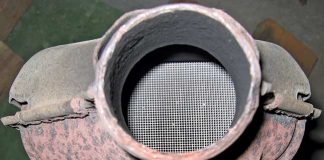
Maintaining a bike is mostly about keeping the chain happy.
Most motorcycle engines have at least one important advantage over car engines: they’re air-cooled, and water leaks are not a problem.
They otherwise require the same maintenance, such as changing the oil and oil filter (when fitted) at recommended intervals, changing the air intake filter and the spark plugs.
Very few of these engines are fitted with hydraulic valve clearance mechanisms, so most of them also require valve clearance adjustment from time to time.
The smaller single- and twin-cylinder engines are very easy to service because all the parts are easy to reach.
Tyre pressure and condition are even more important than on a car, while the main service differences are listed below.
Chain Maintenance
Some farm machinery employs chains that are similar or identical to the chains used on motorcycles.
There are, at present, three types of chains in general use:
- Standard roller chain
This is the conventional chain assembled out of rollers and side plates that has been in use for many years in all sorts of applications.
They require regular lubrication, are fairly inexpensive, and the friction loss while transmitting power is very low.They stretch so much that when you buy a new chain, you should compare the number of links, not the lengths.
2. O-ring chain
This has a small O-ring between the side plates and the rollers to keep some lubricating grease inside.
It only needs lubrication on the outside of the chain, and stretches less than the standard chain, but costs more and has a higher friction loss when transmitting power.
3. X-ring chain
This is similar to the O-ring type, but the sealing rings have X-shaped cross sections to reduce friction between the plates and the rings.
It is also self-lubricating on the inside, stretches the same amount as the O-ring chain, is the most expensive of the three chains, and has the lowest friction loss.
The first step in maintenance is to find out which of the three chain types is fitted to your bike.
If it is an O-ring or X-ring chain, all you need to do is clean the outside with a small brush and paraffin to get all the dirt and gunge out, and apply a special chain lubricant to the outside of the chain.
Do not use any solvent for cleaning, or ordinary oil for lubrication. These products will attack the rings.
Standard chains should ideally be removed from the bike and placed in a paraffin bath for cleaning, but not many people are prepared to do this.
Just clean it on the bike as best you can, and lubricate every link thoroughly with special chain lubricant.
Chain play should be measured with somebody sitting on the bike because it changes as you load the bike.
The correct value should be in the owner’s manual, but 40mm is a good average value.
A slightly loose chain is preferable to a tight chain. It will jump off if it is very loose, and will cause excessive wear if it is too tight.
I once saw a bike that would not move because the chain slipped on the sprockets.
All the teeth were worn flat because the owner kept on taking up any slack in the chain.
Brake Adjustment
Motorcycle brakes are usually cable-operated, so adjustment has to be done from time to time.
The brake arm at the wheel and the cable have to form an angle of 90° when the brakes are applied, otherwise there will be a loss of leverage that will result in an increase in the pressure required at the brake lever.
Most of the above information applies to smaller off-road bikes.
Some large bikes have a drive shaft that eliminates most of the maintenance, or they have hydraulic brakes and even antilock brakes.
Jake Venter is a journalist, retired engineer and mathematician.
Email him at [email protected]













